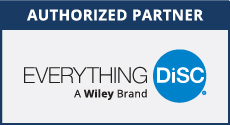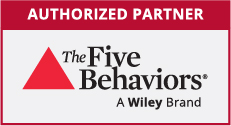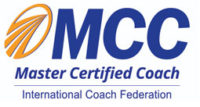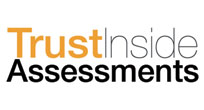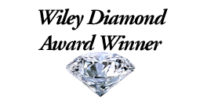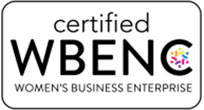| People Whispering Tip: |
| I had a coaching conversation with a new client this week. She came into my office and proceeded to cry for the first 45 minutes of our hour long session. She told me how horrible her last boss was and how she would just have to learn how to accept the mediocrity of the department she was working in. In between sobs, I felt her frustration in trying to express what she could contribute to the organization but just couldn’t get across to the people she was trying to influence.
It hurts not to be heard. Someone had likely given her some bad advice as she said she would just have to learn how to accept this sad state of affairs until she retired. Since I often have clients with similar situations, it is important for me to clarify here that this client, who happens to be a female engineer in a very male-dominated culture, gave me permission to write about her situation abstractly. Client confidentiality is of the utmost importance so I want to be very clear about having asked for permission first to be proactive about any misunderstandings. As her advocate, I couldn’t help but urge her not to put her passions on the shelf until she went home at the end of each day. It’s a tragic loss of life to retire in place in my humble opinion and companies, governments, schools, and communities are much worse off for not having harnessed the passions of their employees. While it’s a cliché, it does hold true that people don’t leave organizations, they leave people – usually bad bosses. In this particular instance, my client was able to transfer into another role where her skills and talents will be recognized and valued. She will still need to interface with this aforementioned nemesis, but not on a daily basis. That’s the good news. The bad news is, somehow and some way, an interpersonal issue of style and communication got in the way of a clear and collaborative conversation. I can only assist the person in front of me and part of what we will be working on is developing a greater level of skill for her in having artful conversations where she can express her needs and gifts in a way where they can be received by the listener. As I have often said, that means understanding your particular lens and filters on the world based upon the perceptions you have regarding the nature of the environment and your personal power in it. In general, people perceive the world with perennially rose-colored or “what’s not working” glasses on. Given that perception, we all then either believe we can change and/or influence the outcome of our environment or we believe it is better to work within the existing circumstances in order to navigate our way through life. Sometimes we hold opposing beliefs which cause us to become unclear in our strategies and therefore our behaviors. So what does this come down to and how does it relate to my client story and you? The first step is having the awareness that your particular reality and lens on the world is not the truth. It may be the truth as you see it, but someone else may see the situation entirely differently. My question to my client, after asking questions about the situation and empathizing with her frustration and pain, was “And how is this affecting you now?” It was no longer a problem or issue for her daily reality anymore after all. The power of this question stopped her in her tracks because she hadn’t realized how tenaciously she was hanging on to being right and to being righteous about the incompetence and wrongness of the other party involved. It can be hard to let go of things that no longer matter. AND at the same time, I certainly am not condoning the poor leadership practices of the other people who contributed to a less than collaborative coaching culture in this case. It would be funny if it weren’t so common in organizational life and in life in general. It reminds me of the old Monty Python movie where the knight has his arms and legs cut off and the victor is riding away on his horse while the fallen knight is calling, “where are you going, I’m not through with you yet?” It’s funny because that knight has lost his power to do anything about the situation in his current state. A better approach might be to ask yourself, what can I learn from this situation? How might I have handled this relationship differently? How can I express my needs in such a way as to be heard by the other person given their beliefs and lens on the world? Going beyond employee engagement and engaging people’s hearts and spirits is the key. My client obviously wanted desperately to be of value, to bring her unique gifts and talents to the table. So much so, that she cried and cried about not being heard even though the threat to her identity and career were clearly over. Doesn’t this suggest that this happens more frequently than the typical employee survey reveals? One of my respected fellow DiSC experts and business associates, Keith Ayers, has researched this issue and has identified four primary obsessions that managers unintentionally make which increase the threat of disengagement. These obsessions contribute to the creation of the kind of scenario I’ve just described with my new client. In his book, Engagement is not Enough, Keith outlines these common sandtraps. For our purposes here, I have selected two which I have paraphrased and added my color commentary to as follows: An obsession with financial results – being obsessed with the bottom line can lead to good results but think how much more powerful an organization could be in achieving their goals with passionate employees who are heard and supported in expressing their values in a positive and productive way for the good of all concerned. An obsession with logic and left-brain thinking – managers who are obsessed with logic and left-brained thinking are dismissive of feelings and say that emotion doesn’t belong in the workplace. They don’t believe that engagement has anything to do with organizational performance or that people can be passionate about their work. They say things like “people just need to do their jobs.” Everyone needs to understand that emotional intelligence and right-brain thinking are critical skills for becoming successful leaders in the new economy. So my question to you, whether you are a formal leader/manager in your organization or whether you are a leader without title, how are your perceptions and potential obsessions affecting the culture around you? Are you encouraging passion and engagement from the hearts and minds of your associates or are you dampening their spirits by your lack of skill and awareness? I invite you to engage with me to see if you can become better at this critical competency. We are here to assist you. Feel free to call us at 404-327-6330 or email me at Laura@lauraadavis.com. |
SCROLL DOWN 🙂
| DiSC Assessment Application: |
| Given the leadership challenge I’ve just posed, the key question for leaders at all levels is “how can I contribute to creating a workplace environment where everyone in the organization wants to and can perform at their best?My answer is to train everyone in an organization about the power of people-whispering by training them using the new Everything DiSC Workplace Facilitation kit. Everything DiSC Workplace Offers Modular Facilitation for All Delivery Methods: In-depth: Three 90-minute modules; fully-scripted facilitation with engaging activities and workplace-focused video. Also includes a 30-minute optional people-reading module.Easily Customizable: Switch out video clips. Modify the PowerPoint, Leader’s Guide, and handouts. Add or delete sections to fit any time-frame. The Everything DiSC Workplace Facilitation Kit includes:
Module 1: Discovering Your DiSC Style Module 2: Understanding Other Styles Module 3: Building More Effective Relationships People-Reading Optional Module |
SCROLL DOWN 🙂
| Transformational Coaching Tip: |
| Since this month’s theme has been about harnessing passion through engaging effective relationships, it is important to remember that at some point in most people’s careers, technical competence ceases to be the key factor which contributes to their career success. Early on in our careers, we build our credibility on competence and technical expertise. If you look at the typical CEO however, they are usually not the “smartest” people in their organization. They are not the person who is going to cure cancer or discover the next theory of relativity.
What they have learned to do is engage the hearts and minds of those smarter people around them by building strong one-on-one relationships. I am not suggesting there aren’t other success factors involved, but this is a core skill upon which other leadership competencies are built.Here are some simple but often overlooked tips for doing so that are so easy and yet so often overlooked in today’s frantic and/or virtual workplaces.
The key here is to follow through with these behaviors with a genuine generosity of spirit and not as a manipulative technique or a coaching how-to. For ways to inculcate a coaching mindset into your team or organizational culture, reach out to us at 404-327-6330 and/or email me at Laura@lauraadavis.com. We are here to help create healthier, happier and more profitable workplace environments for all! |


